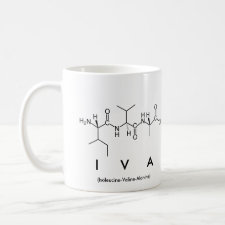
Authors: Rodríguez-Dorado R, Carro AM, Chianella I, Karim K, Concheiro A, Lorenzo RA, Piletsky S, Alvarez-Lorenzo C
Article Title: Oxytetracycline recovery from aqueous media using computationally designed molecularly imprinted polymers.
Publication date: 2016
Journal: Analytical and Bioanalytical Chemistry
Volume: 408
Issue: (24)
Page numbers: 6845-6856.
DOI: 10.1007/s00216-016-9811-6
Abstract: Polymers for recovery/removal of the antimicrobial agent oxytetracycline (OTC) from aqueous media were developed with use of computational design and molecular imprinting. 2-Hydroxyethyl methacrylate, 2-acrylamide-2-methylpropane sulfonic acid (AMPS), and mixtures of the two were chosen according to their predicted affinity for OTC and evaluated as functional monomers in molecularly imprinted polymers and nonimprinted polymers. Two levels of AMPS were tested. After bulk polymerization, the polymers were crushed into particles (200-1000 μm). Pressurized liquid extraction was implemented for template removal with a low amount of methanol (less than 20 mL in each extraction) and a few extractions (12-18 for each polymer) in a short period (20 min per extraction). Particle size distribution, microporous structure, and capacity to rebind OTC from aqueous media were evaluated. Adsorption isotherms obtained from OTC solutions (30-110 mg L-1) revealed that the polymers prepared with AMPS had the highest affinity for OTC. The uptake capacity depended on the ionic strength as follows: purified water > saline solution (0.9 % NaCl) > seawater (3.5 % NaCl). Polymer particles containing AMPS as a functional monomer showed a remarkable ability to clean water contaminated with OTC. The usefulness of the stationary phase developed for molecularly imprinted solid-phase extraction was also demonstrated
Template and target information: oxytetracycline, OTC
Author keywords: computational design, molecularly imprinted polymer, oxytetracycline, Rebinding isotherm, Solid-phase extraction, Groundwater remediation



Join the Society for Molecular Imprinting

New items RSS feed
Sign-up for e-mail updates:
Choose between receiving an occasional newsletter or more frequent e-mail alerts.
Click here to go to the sign-up page.
Is your name elemental or peptidic? Enter your name and find out by clicking either of the buttons below!
Other products you may like:
 MIPdatabase
MIPdatabase









